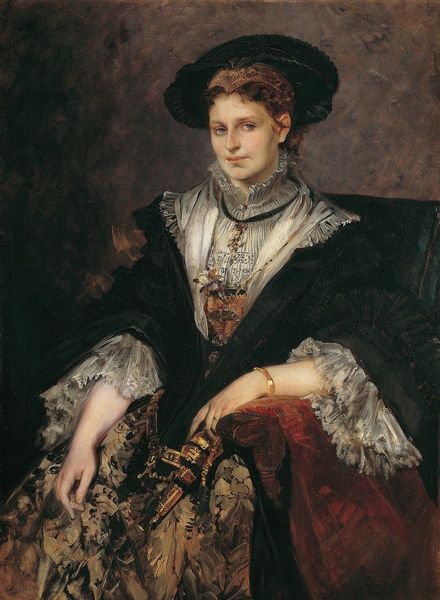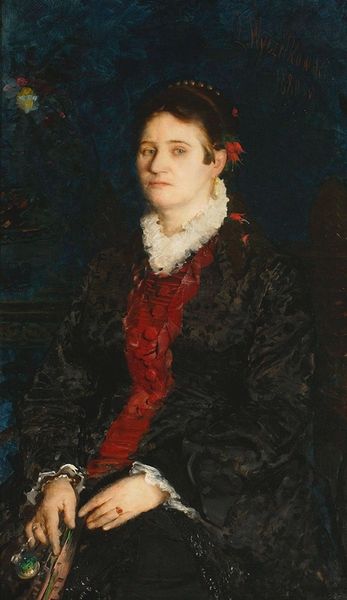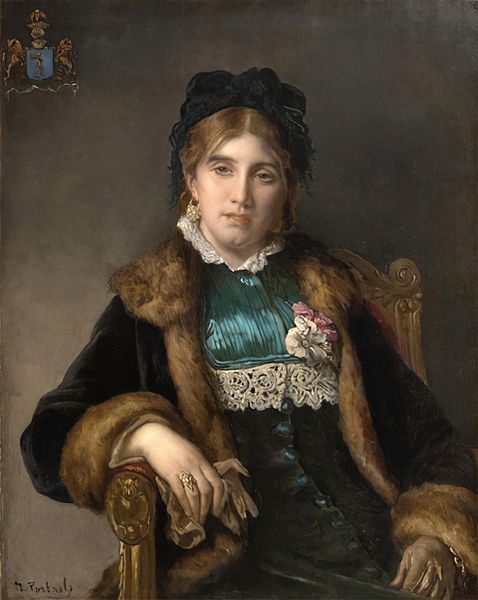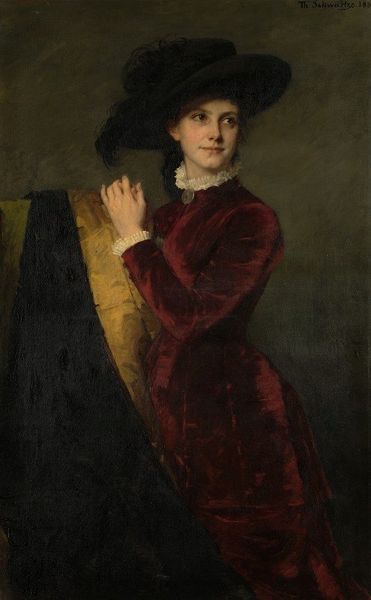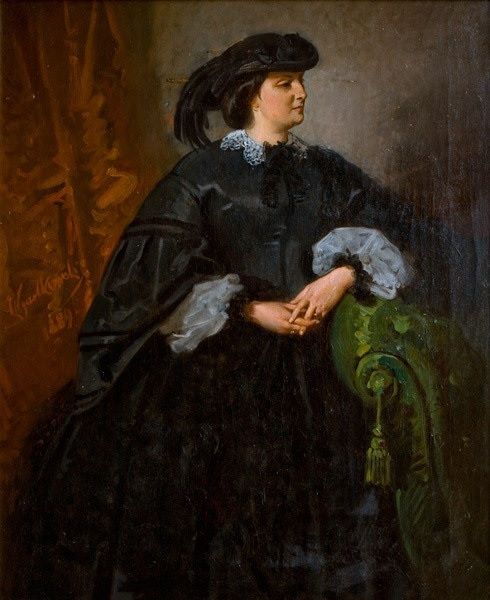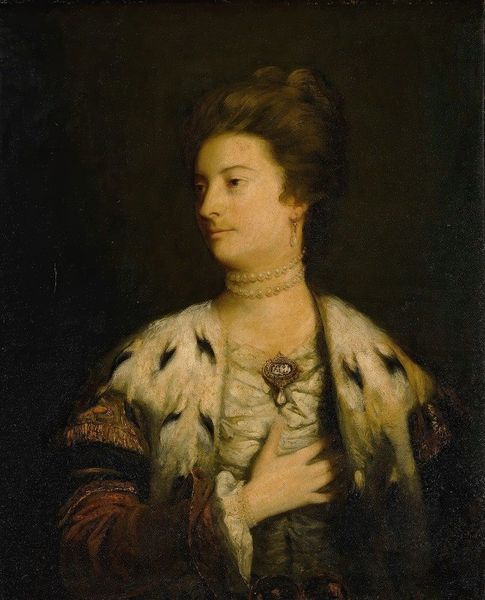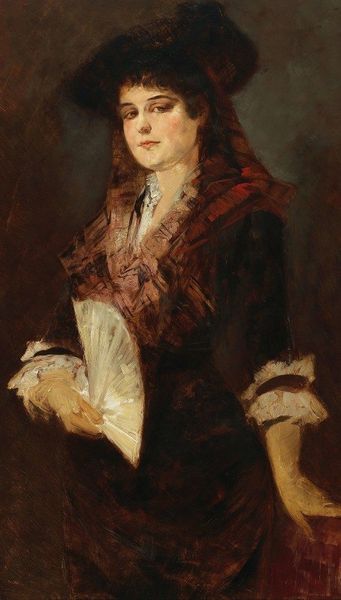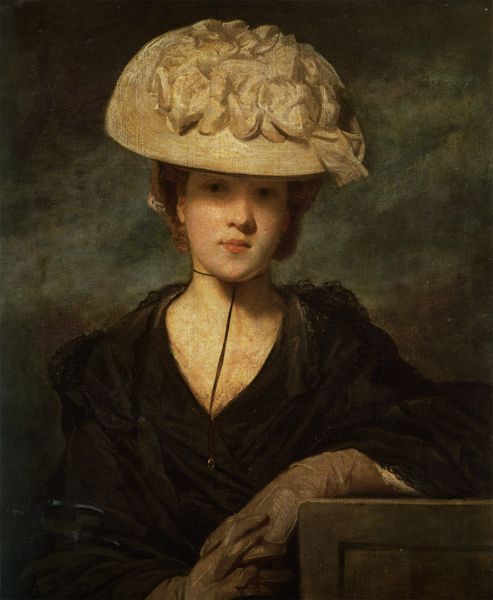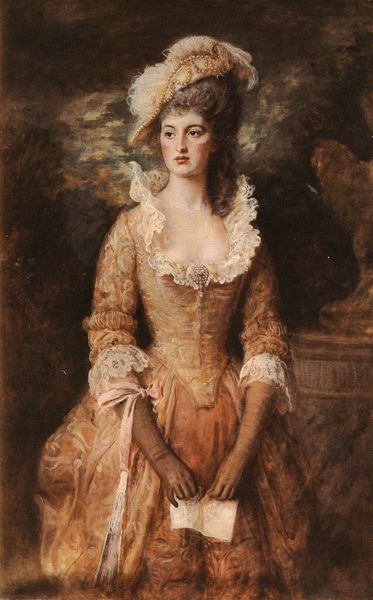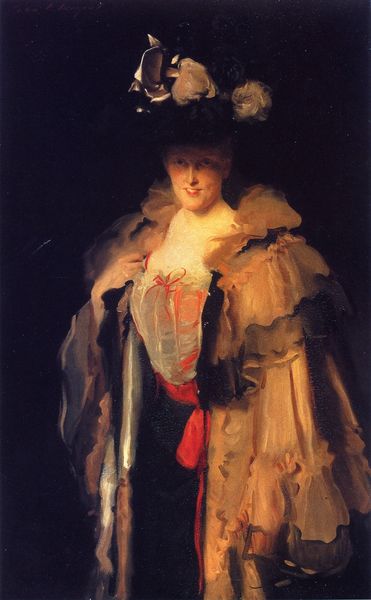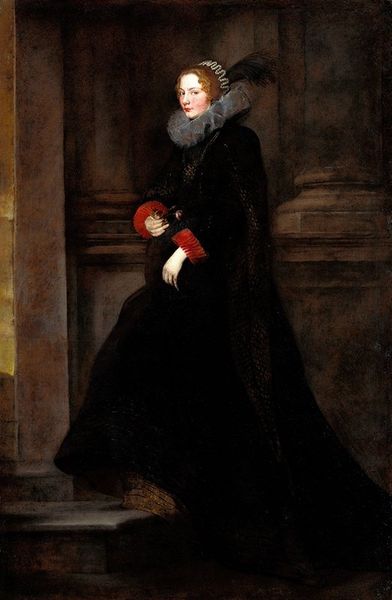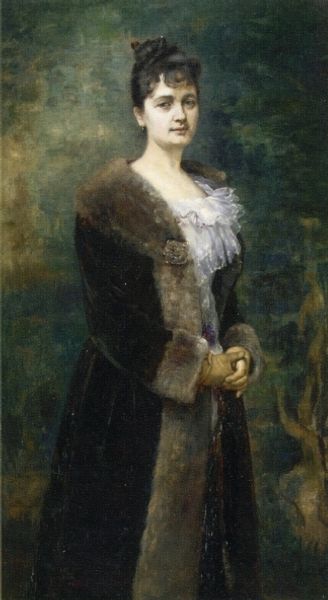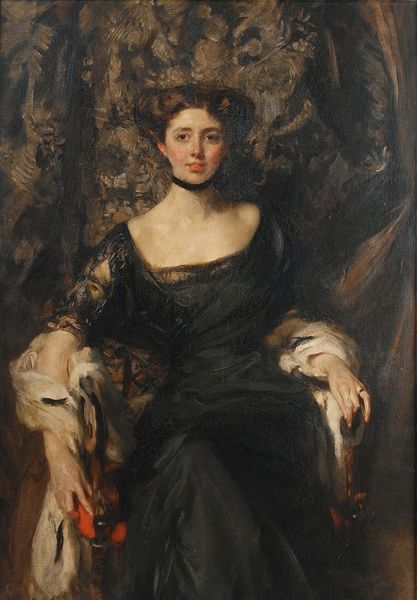
painting, oil-paint
#
portrait
#
painting
#
oil-paint
#
academic-art
#
realism
Copyright: Public domain
Eastman Johnson painted this portrait of Ethel Eastman Johnson Conkling in the late 19th century. During this era, portraiture served as a powerful tool for defining and reinforcing social status. Consider what it meant for a woman to have her portrait painted. Ethel’s gaze is averted, perhaps indicative of the limited agency women had in directing their own narratives. Her elaborate attire, however, speaks volumes about her family’s wealth and social standing. The lace, the hat, the rich fabrics—all of these elements communicate a very specific message about who she is in relation to the world around her. This is more than just a picture, it is a statement of identity, carefully constructed and presented for public consumption. Johnson, as the artist, plays a key role in shaping this representation, both reflecting and reinforcing the societal norms of his time. What does it mean to capture someone's likeness, and who has the power to do so?
Comments
No comments
Be the first to comment and join the conversation on the ultimate creative platform.
